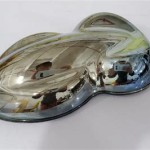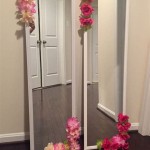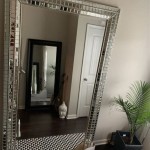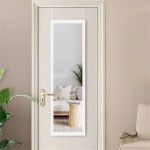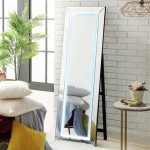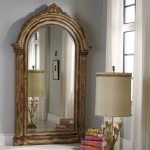Mirror Backsplash Tile: A Reflective Choice for Kitchen and Bathroom Design
Mirror backsplash tile offers a unique and stylish alternative to traditional materials like ceramic or glass. Its reflective surface can dramatically alter the perception of space and light, making it a compelling choice for both kitchens and bathrooms. This article will explore the advantages, disadvantages, installation process, and design considerations associated with mirror backsplash tile.
Advantages of Mirror Backsplash Tile
One of the most significant benefits of using mirror tiles for a backsplash is their ability to amplify light. In smaller kitchens or bathrooms, strategically placed mirror tiles can create the illusion of a larger, more open space. They effectively bounce natural and artificial light around the room, brightening even dimly lit areas.
Beyond the practical benefit of increased light, mirror tiles offer a striking aesthetic appeal. Their reflective surface adds a touch of glamour and sophistication to any space. Mirror tiles can also serve as a decorative focal point, reflecting interesting elements within the room and adding depth to the overall design.
Mirrored backsplashes can be surprisingly versatile in terms of design. Available in various shapes and sizes, from small squares to large rectangles and even intricate mosaic patterns, they can be customized to complement a wide range of interior styles. Whether the desired aesthetic is modern minimalism, classic elegance, or something more eclectic, mirror tiles offer a flexible design element.
Disadvantages of Mirror Backsplash Tile
While mirror backsplash tile offers numerous advantages, it's essential to consider the potential drawbacks. One primary concern is the upkeep required to maintain their pristine appearance. Mirror surfaces are prone to showing smudges, fingerprints, and water spots, particularly in high-traffic areas like kitchens and bathrooms. Regular cleaning is necessary to preserve their shine and reflective qualities.
Another potential issue is the susceptibility of mirror tiles to scratching and chipping. While tempered glass mirror tiles offer increased durability, they are not entirely immune to damage. Care must be taken during installation and daily use to prevent scratches or chips that can detract from their appearance.
Depending on the overall design aesthetic, the reflective nature of mirror tiles can sometimes be overwhelming. Too much reflection can create a visually busy or distracting environment. Careful planning and consideration of the surrounding elements are crucial to prevent an overly reflective space.
Installation of Mirror Backsplash Tile
Installing mirror backsplash tile is a relatively straightforward process, similar to installing other tile types. The surface must be clean, dry, and level before beginning. A high-quality adhesive designed specifically for mirror tiles is essential for a secure and long-lasting bond. Spacers are used to ensure even grout lines between the tiles.
Grouting mirror tiles requires extra care to prevent scratching the delicate surface. Unsanded grout is typically recommended to minimize the risk of scratches. After the grout has dried, the tiles should be thoroughly cleaned to remove any residue. A protective sealant can be applied to further protect the mirror surface from moisture and damage.
Precise measurements and careful cutting are crucial during installation. Specialized tile cutters or scoring tools designed for glass are recommended to achieve clean, accurate cuts and prevent chipping. It’s advisable to wear appropriate safety gear, including gloves and eye protection, during the cutting and installation process.
Design Considerations for Mirror Backsplash Tile
When incorporating mirror tiles into a backsplash design, it's crucial to consider the overall style of the room. In modern kitchens, large format mirror tiles can create a sleek and minimalist look. Smaller, mosaic-style mirror tiles can add a touch of vintage charm to more traditional kitchens or bathrooms.
The placement of mirror tiles can significantly impact their effectiveness. Installing them opposite a window or light source will maximize their light-reflecting properties. Strategically placing mirror tiles around existing artwork or decorative elements can create interesting visual reflections and enhance the overall design.
The color and finish of the surrounding materials also play a role in the overall aesthetic. Combining mirror tiles with darker cabinetry or countertops can create a dramatic contrast, while pairing them with lighter materials can result in a brighter, more airy feel. Experimenting with different combinations and layouts can help achieve the desired design effect.

Mirrored Herringbone Backsplash Tiles Tile Design Mirror

3x6 Beveled Mirror Subway Tile In Paris Gray Tilebar Com

20 Kitchen Backsplash Ideas That Won T Go Out Of Style Anytime Soon Mirrored Tile Unique Mirror

Beveled Paris Gray Hexagon Polished Glass Tile

Veranda Paris Gray Antique Mirror Mosaic Tile With Quartz Accents Polished Backsplash Kitchen

3x6 Wide Beveled Subway Antique Decorative Mirror Tile Backsplash Sold By Piece

Mirrored Picket Backsplash Tiles Design Ideas

Reflection Revere Mirror Tile Tilebar Com

Antique Mirror Tiles Vintage Müller Designs

Merola Tile Re Beveled Antique Mirror 3 In X 6 Glass Wall 10 4 Sq Ft Case Wsdlsbam The Home Depot

